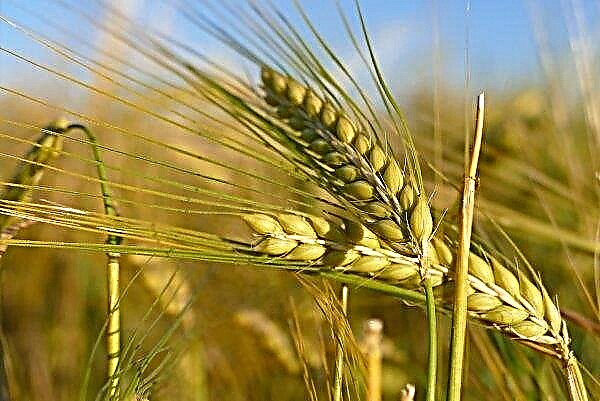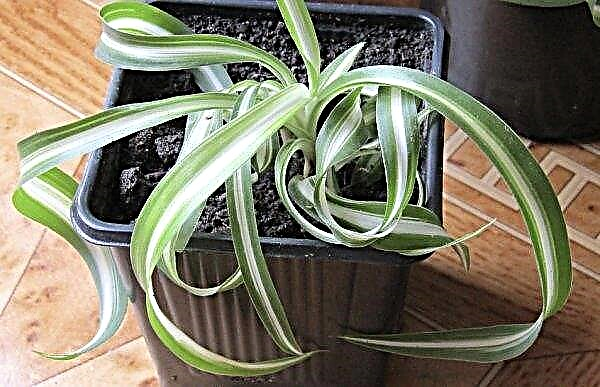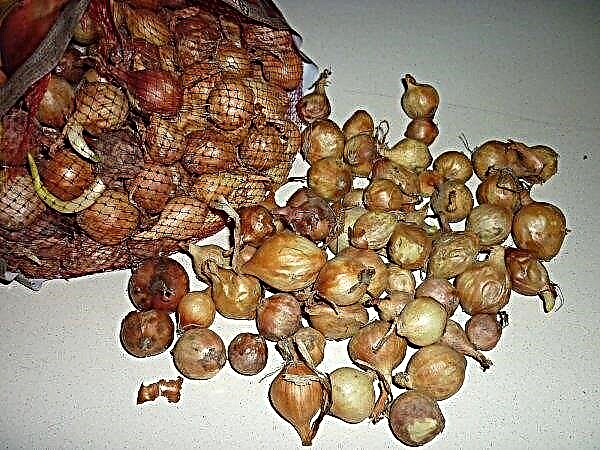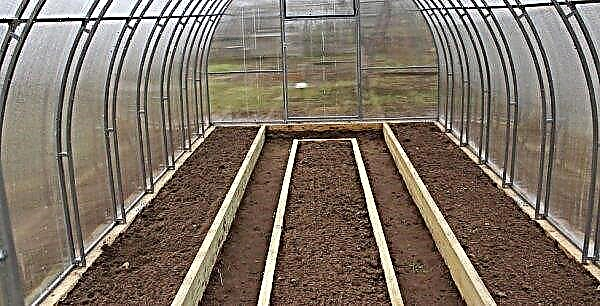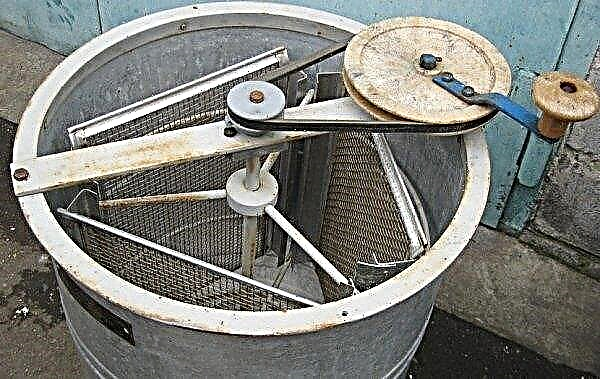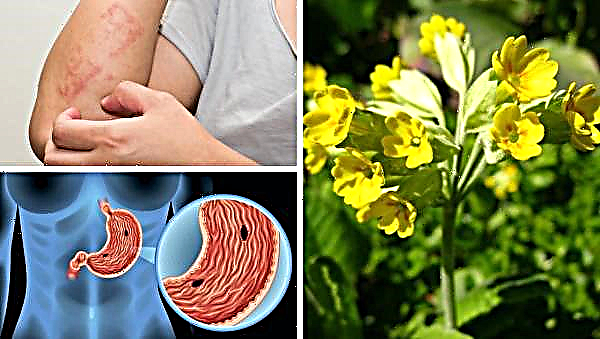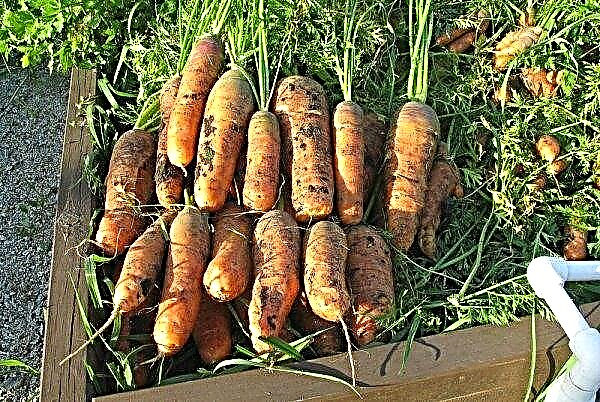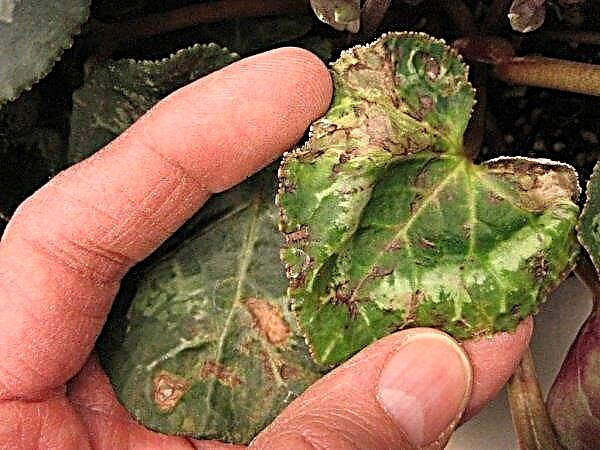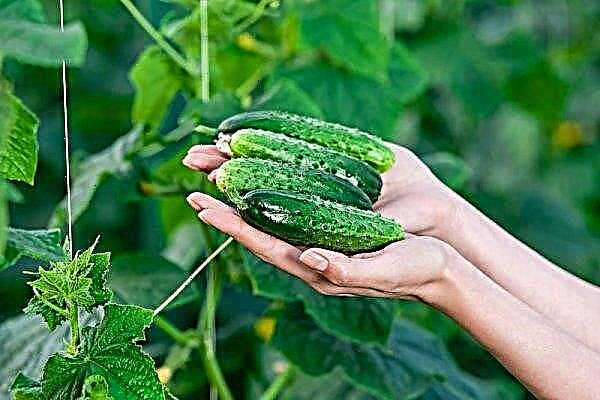Hortensia treelike Pink Annabelle is one of the last breeding varieties that has already managed to win fans thanks to beautiful pink flowers and long flowering. Having high decorative properties in combination with unpretentiousness and ease of care, the plant has become widespread in parks, gardens and in household plots.
Botanical Description
Hydrangea Pink Annabelle arboreal bred on the basis of the much loved by many Annabelle (Annabelle).

Variety characteristic:
- Bushes. They reach a height of 90-120 cm. The crown is loose. They have thin but strong shoots that do not bend under the weight of heavy inflorescences. The color of the young branches is green, gradually turning into light brown.
- Flowers. Several flattened inflorescences have the shape of a hemisphere. Four-petalled flowers, have the correct shape. The color of the flowers is changing. In the beginning, the upper part of the petals is painted in a pale pink color, the lower part is dark pink. Over time, the entire inflorescence uniformly turns into a saturated pink color. With fading, a gray tint appears.
- Flowering period. Flowers are formed on new shoots. Flowering lasts from late June-July to September.
- Leaves. Oval, large. Color - bright green above, with a bluish tint - below. At the base, the leaf is round, serrate at the edge.
The plant is frost-resistant and even after severe winters grows quickly and restores shape. Unpretentious to soil quality, but develops better in slightly acidic soil.
Did you know? Pink Annabel differs from other tree-like varieties in that it is able to bloom again after 1.5 months, if pruned after the first flowering.
Use in landscape design
An attractive flowering shrub is able to revive any landscape composition, so gardeners use it in a wide variety of variations:
- in the background to emphasize lower flowering foreground plants;
- between other ornamental plants or flower beds;
- for zoning plots;
- in group landings;
- in the background in rock gardens;
- for arches, entrance areas in order to give them brightness;
- on flower beds in order to emphasize the brightness of other colors or as an independent composition.
Landing rules
Pink Annabelle perfectly survives both in the southern and northern parts of the middle zone, is undemanding to the quality of the soil. Planting and caring for the bush, as a rule, does not cause difficulties. Site selection should be given particular attention, giving preference to slightly shaded areas.
With strong and prolonged shading, plant growth slows down, it rarely blooms and begins to hurt. The best option is to place bushes at a distance of 2-3 m from tree trunks. You can plant a plant in well-lit areas, but frequent and plentiful watering is important.

Prerequisites for Growth
Despite the unpretentiousness of Pink Annabelle, there are rules and nuances that are recommended to be considered in order to so that the plant more easily adapts to new conditions after planting, actively grows, blooms profusely and for a long time:
- Correctly choose a site for planting seedlings.
- Set the stage.
- Provide timely plentiful watering.
- To mulch.
- Regularly feed the shrub.
- Trim.
- Properly prepare for wintering.
Soil preparation
Tree hydrangea prefers fertile acidic or slightly acidic soils and grows poorly on calcareous. Therefore, the site must first be fertilized with organics, and the soil should be breathable and loose. Its optimal composition is leafy soil with the addition of peat and sand.
Before disembarking:
- Dig a spade in the bayonet.
- Add fertilizers.
- Prepare landing pits in advance (approximate dimensions - 50 × 70 cm).
- Cover the bottom of the pit with a layer of small stones or gravel as drainage.
 During group planting, it is necessary to observe a distance between the wells of at least 1 m, since the hydrangea roots grow greatly.
During group planting, it is necessary to observe a distance between the wells of at least 1 m, since the hydrangea roots grow greatly.
The timing
Planting time depends on the climate of the region:
- in an area with a warm climate, you can plant a bush in spring and autumn;
- in regions with a cold climate, it is recommended to plant in early spring, which will help the plant take root, gain strength, and it is easier to tolerate winter.
Landing algorithm
Before planting, seedlings must be thoroughly moistened and carefully removed from the cassettes, being careful not to damage the earthen lump.
Landing process:
- Place the seedling together with a lump of earth in the center of the prepared hole, evenly distribute the roots in all directions.
- Deepen the seedling so that the neck of the root is level with the surface of the earth.
- Fill the hole with soil so that all the roots are hidden and compacted.
- Pour plenty of water.

Care Features
Care for hydrangea, especially in the first 1-2 years after planting, is necessary to achieve active development, abundant and prolonged flowering of the bush. Given its features, it is important to water it in a timely manner and sufficiently, to top-dress and trim. In addition, do not forget about nutrition and disease prevention.
Watering and mulching
During the first 2 years after planting, the frequency of irrigation is important. Given that the hydrangea root system grows horizontally, it is subject to rapid drying.
Important! No less than a week before the expected frosts, the plant should be "preserved" by pouring warm water. This can not be done if frost has already come, in order to avoid freezing of the roots.
It is important to observe the irrigation regime:
- as it dries, abundant soil moisture is required every 2-3 days;
- during dry periods, more frequent watering is recommended, which can be brought up to 4 times a week.
You need to water it with soft (ideally - rain) water, which is defended and warmed up before use.
In the early years, the following agricultural practices should be especially carefully considered:
- weed removal;
- loosening;
- mulching.
 It is important to remove weeds and loosen the soil regularly, thereby providing oxygen access to the hydrangea root system.
It is important to remove weeds and loosen the soil regularly, thereby providing oxygen access to the hydrangea root system.
In order to avoid overdrying the soil, it is recommended to mulch around the trunk circles of the bush, previously shallow (considering the surface location of the root system) loosening the soil. The first mulching is carried out immediately after planting.
Experienced gardeners use organics as a mulch, which at the same time nourishes the plant:
- compost;
- compost mixed with sawdust;
- humus mixed with sawdust and sand.
On average, a bucket of a mixture is required per copy to get a 5–6 cm mulch layer. In summer, mowed grass, sawdust, and needles are used for mulch.
Top dressing
Hydrangea should be fed with organic and mineral substances, which should be administered in a timely manner, without violating the recommended dosage:
- Fifteen to twenty days after planting, fertilize the soil around the seedling with the composition: 25 g of urea, 30 g of potassium, 35 g of superphosphate.
- During flowering, introduce 60 g of superphosphate and 45 g of potassium into the soil.
- In the autumn, sprinkle around the trunk with humus.
 To make the branches of the shrub strong, they can be watered periodically with a weak solution of potassium permanganate.
To make the branches of the shrub strong, they can be watered periodically with a weak solution of potassium permanganate.
Pruning
Proper pruning ensures rapid shrub renewal, active growth of young strong shoots and tying a large number of flowers. Tree hydrangea can be pruned quite deeply, since a small number of branches can provide good flowering.
Shrubs are subjected to these types of pruning:
- Sanitary. It is produced once a year (in spring) to remove damaged, diseased, dry branches and dried inflorescences.

- Capital. Allows you to renew the plant at the age of at least 3-4 years, cutting off the shoots under the root.
- Thinning. Dense shrubs periodically need to be thinned out, cutting shoots in their central part, poorly lit by the sun. As a rule, they do not give inflorescences, consuming plant nutrients.
- Formative. As a rule, during the pruning process, last year's shoots are shortened a little by 4-8 buds, which provokes the growth of new flowering shoots.

Disease and Pest Prevention
Pink Annabelle, like other varieties of tree hydrangea, is subject to diseases associated with:
- violation of metabolic processes;
- fungal infections;
- lesions by viruses.
Check out

Violation of metabolic processes may be associated with:
- High temperature. Manifested by yellowing and falling of leaves, the appearance of black burn spots on the leaves.
- Excessive watering. In this case, there is a wet blackening of the leaves, which can also occur from temperature changes.
- Nutritional deficiency. Manifested by yellowing and falling leaves.
- High or low acidity of the soil. In this case, yellowing of the leaves is observed.
The most common fungal and viral lesions of tree hydrangea are:
- Gray rot, provoked by Botrytis cinerea fungi, often appears during frequent rains. The leaves soften and become watery. Under the influence of the sun, they dry out, but grooves remain on the leaves. To combat the disease, the affected branches are cut out and burned, and the plants are treated with Fundazol.
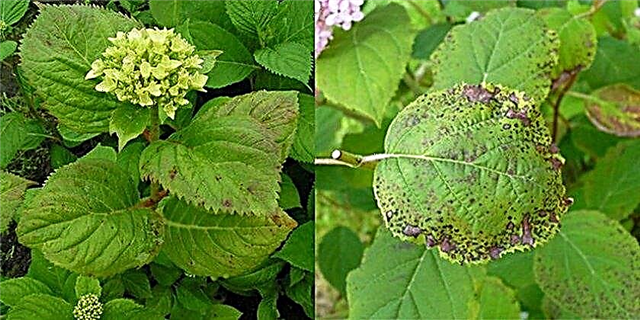
- Peronosporosis manifests itself in the form of greasy, darkening spots over time on the leaves. Occurs in cool and humid weather. The shrub must be treated with a composition that is prepared from 150 g of soap, which is dissolved in a bucket of water, with the addition of 15 g of copper sulfate.

- Powdery mildew forms yellow or green spots on the leaves, and the lower part is covered with a gray coating. The branches of the bush are deformed, and it gradually dies. For treatment, fungicides are used: Phytosporin-B, Topaz, and Skor.
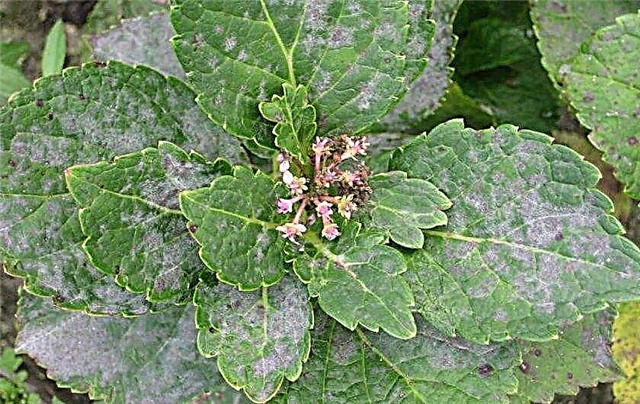
- Viral ring spotting. Brown spots form on the leaves of the affected plant, the leaves become deformed, and the flower dies. This disease is not treated, the bush is removed and burned.
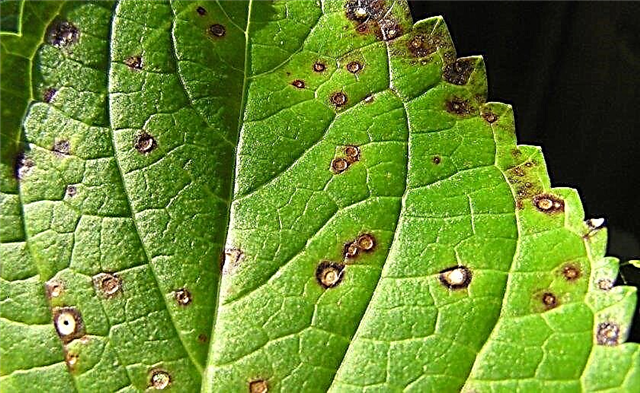
Diseases can be brought along with infected planting material, non-disinfected garden tools and insects:
- gall nematode;
- spider mite;
- aphids.
To control pests, insecticides such as Akarin, Komandor, Tanrek are effective.
To prevent infection of plants with infections and pests, it is imperative to carry out the following preventive measures:
- spray the bushes with Bordeaux liquid in early spring and late autumn;
- treat planting material with copper sulfate;
- apply insecticides to the soil before planting;
- keep the plot in order: remove weeds, destroy infected plant debris.
Did you know? There are types of hydrangeas that can change the color of the petals depending on the composition of the soil. Inflorescences of specimens growing on acidic soils are blue, alkaline - lilac, neutral - pale beige.
Shelter for the winter
Pink Annabel easily tolerates frosts and quickly recovers after winter, growing new shoots, but nevertheless, it is recommended to prepare the bush for cold weather to protect it from severe frosts.
To do this, you must:
- In the autumn, cut off damaged and dry branches and treat the cut points with some kind of protective compound.
- In September, remove all leaves from the bottom of the bush. This is done so that the branches become faster woody, thereby becoming more frost-resistant. Upon the onset of frost, all leaves except the apices are removed from the shrub so that the flower buds remain protected. Dry inflorescences can not be removed; they look spectacular in winter and decorate the garden.
 Tree hydrangea tolerates low temperatures well without shelter and hilling, but for the first few years after planting, young shrubs need to be insulated.
Tree hydrangea tolerates low temperatures well without shelter and hilling, but for the first few years after planting, young shrubs need to be insulated.
When organizing the insulation, any material can be used, since this type of plant is not at all afraid of aging. The bushes are insulated before the start of a stable decrease in air temperature below zero.
No complicated tricks are required for them, enough:
- Fill the bushes at the base with dry soil.
- Tie the branches of large bushes to a peg and insulate them with spruce branches.
In this form, hydrangea will survive the winter and will delight you with beautiful flowers in the summer.
Variety propagation
Many gardeners prefer to breed Pink Annabel on their own, which saves on the purchase of seedlings.
Important! Pink Annabelle is not customary to propagate by seed. Since it was bred in a selective way, plants obtained from seeds do not have the characteristics of a variety.
Tree hydrangea easily propagates:
- Green cuttings. The most popular way. To do this, use the leafy part of the branches. Choose side shoots that take root faster. The optimal time for cutting cuttings is the appearance of buds (approximately in mid-July). From the shoots you need to remove the ends with buds, divide into fragments with 2-3 pairs of leaves. Remove leaves from the lower half of the cuttings, and shorten the upper half by half. Maintain them for about 2 hours in a dark place in the root forming solution. Then plant in a moistened mixture consisting of peat and sand in a ratio of 2: 1. It is advisable to cover the planted material with banks, thus creating greenhouse conditions for them. As a rule, after a month you can see the first leaves, which indicates the successful rooting of cuttings.
- Layering. Carried out before the buds began to bloom. To do this, you need to dig a place around the bush. Lay the lower shoots in shallow grooves, fix them on the ground, sprinkle with soil. The process of root formation will accelerate if you drag a place in front of the first lower kidney with a thin wire. Young shoots on layering should appear by mid-August. When they grow by 15–20 cm, they should be spudded and this operation should be repeated weekly until the knoll reaches a 20-centimeter height. In October, cuttings can already be dug up, divided and transplanted to a bed for growing.
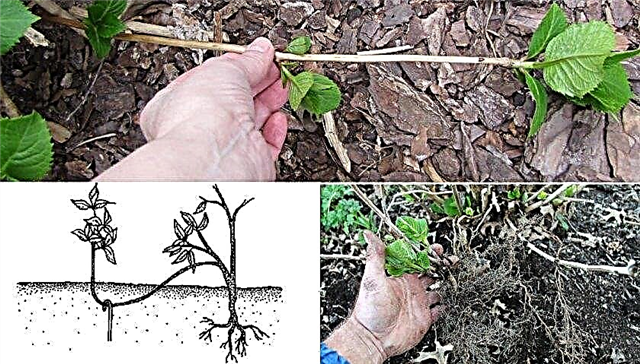
- Offspring (shoots). For propagation by this method in the fall, having removed the topsoil, it is necessary to carefully separate the shoots overgrowth. Plant shoots on a bed for growing and transplanted to a permanent place after 1-2 years.
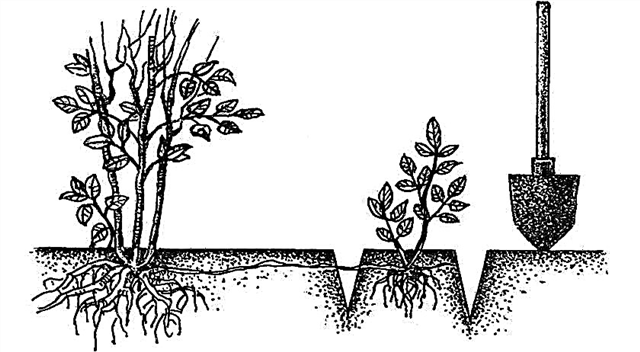
- Dividing the bush. In early spring, pre-watered abundantly scrub the bush and wash the roots. Trim the tips of the roots and shoots slightly. Divide the material prepared in this way into parts that are transplanted to a permanent place.
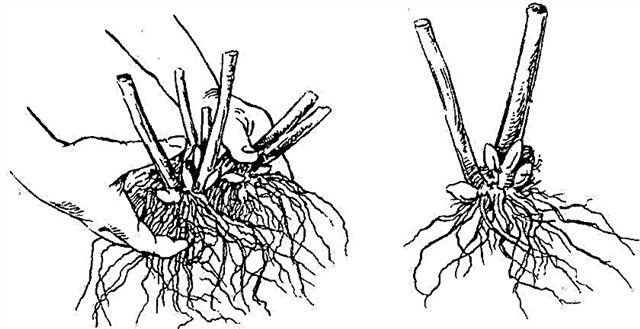
Hydrangea is a spectacular flowering shrub that has a powerful bush of a beautiful shape and unusually beautiful flowers. Due to the variety of varieties, ease of care, reproduction and duration of flowering, he has gained immense popularity among experienced and novice gardeners. Pink Annabelle is a luxurious plant, which, subject to simple conditions, grows and develops beautifully, impressing with lush, bright blooms for a long time and decorating the site even in winter.










